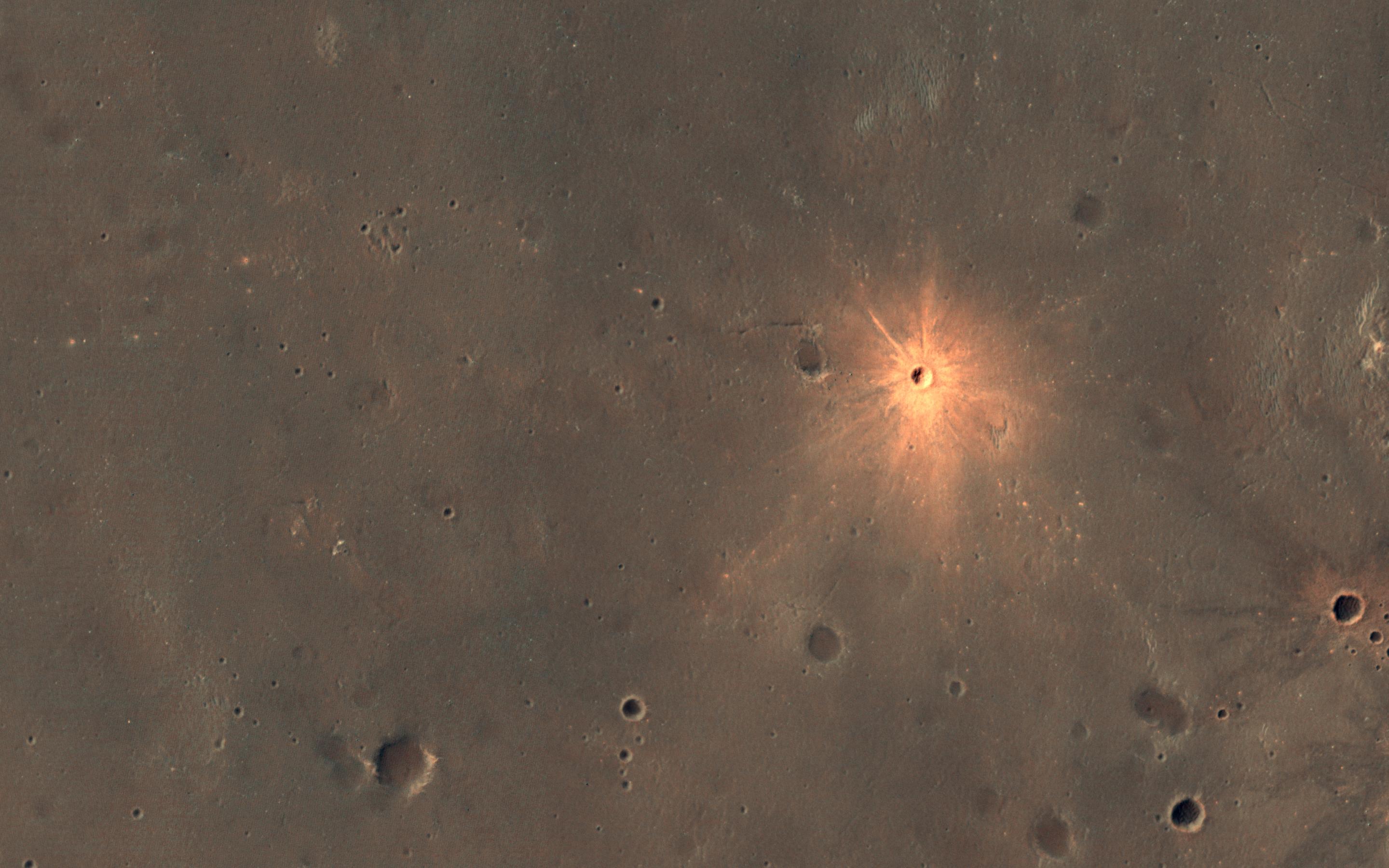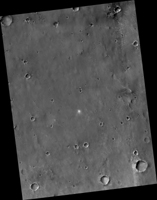
|
A New Impact Crater with Bright Ejecta
- Click the image above for a larger view
- Full-Res JPEG (2880 x 1800) (494.5 kB)
- Full-Res TIFF (2880 x 1800) (12.5 MB)
Caption:

Map Projected Browse Image
Click on image for larger version
The Context Camera onboard MRO has been discovering new impact sites on Mars, followed up with HiRISE images. Usually these sites are discovered as new dark spots from removal or disturbance of bright dust, but a few show up as new bright spots.
These craters may have bright ejecta from exposure of shallow subsurface materials, below a thin dark cover. An alternate theory—that this is a particle size effect—is unlikely because the bright materials are also distinctly redder than surrounding areas, and because ejecta is typically more coarse-grained, which would make the surface darker rather than brighter.
The new crater visible here is about 13 meters in diameter . The color has been enhanced for this cutout.
The map is projected here at a scale of 25 centimeters (9.8 inches) per pixel. (The original image scale is 26.2 centimeters [10.3 inches] per pixel [with 1 x 1 binning]; objects on the order of 79 centimeters [31.1 inches] across are resolved.) North is up.
This is a stereo pair with ESP_068033_1700 .
Background Info:
The University of Arizona, in Tucson, operates HiRISE, which was built by Ball Aerospace & Technologies Corp., in Boulder, Colorado. NASA's Jet Propulsion Laboratory, a division of Caltech in Pasadena, California, manages the Mars Reconnaissance Orbiter Project for NASA's Science Mission Directorate, Washington.
Cataloging Keywords:
| Name | Value | Additional Values |
|---|---|---|
| Target | Mars | |
| System | ||
| Target Type | Planet | |
| Mission | Mars Reconnaissance Orbiter (MRO) | |
| Instrument Host | Mars Reconnaissance Orbiter | |
| Host Type | Orbiter | |
| Instrument | High Resolution Imaging Science Experiment (HiRISE) | |
| Detector | ||
| Extra Keywords | Atmosphere, Color, Crater, Dust, Impact, Map, Storm | |
| Acquisition Date | ||
| Release Date | 2021-05-24 | |
| Date in Caption | ||
| Image Credit | NASA/JPL-Caltech/University of Arizona | |
| Source | photojournal.jpl.nasa.gov/catalog/PIA24619 | |
| Identifier | PIA24619 | |
